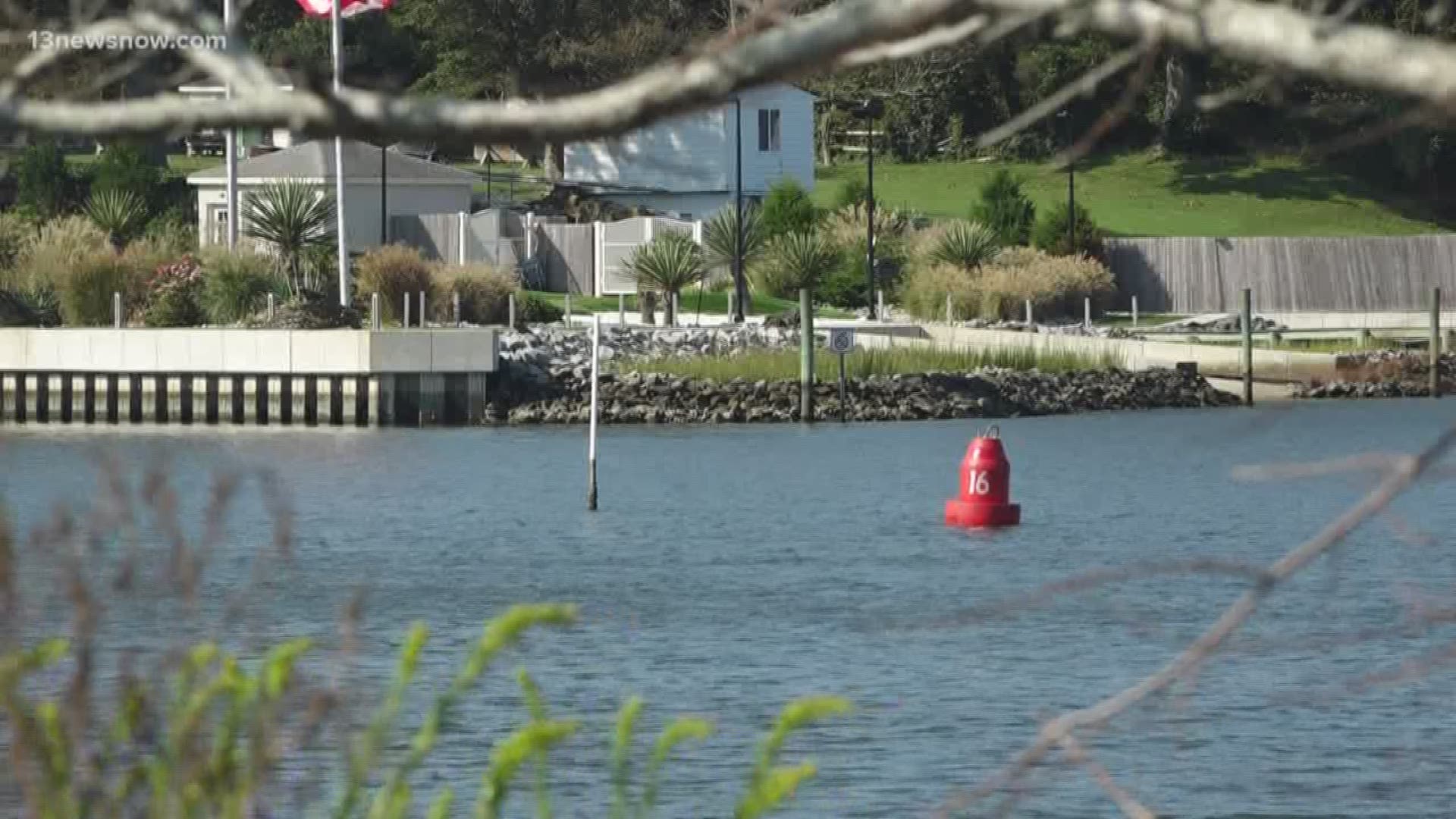VIRGINIA BEACH, Va. — It was a busy morning for the U.S. Coast Guard and Norfolk's Army Corps of Engineers. Teams spent the morning installing new buoys in Broad Bay, Linkhorn Bay, and the Lynnhaven Inlet.
The buoys are replacing fixed pylons.
"We've been removing fixed aids to navigation that were nearing the end of their service life, and because of that they were almost becoming hazards to navigation rather than benefits to the waterway," said Morgan Merritt of the U.S. Coast Guard.
"They're [buoys] easier for us to move. They're easier for us to replace if there's a casualty or hazard to this aid, and they actually do a better job of marking the channel and the waterway for the mariner."
The area is a popular spot for boaters but Army Corps of Engineers Port Engineer Scott Titus explained, the waters aren't always easy to navigate without some sort of guide.
"Some of the areas are extremely shallow," he said. "There are spots out in Lynnhaven Inlet - just inside the Lesner Bridge - that are mere inches and you can't see that from the surface. So it's important to keep the channels clearly marked so that the boaters know where they can go and where they should stay away from."
The buoys are a critical part of navigation, especially for the area, as it's prone to shoaling.
"Shoaling is when the waterway just due to natural phenomenon – winds, storms – pushes sands in, pushes the bottom more shallow than it's advertised," Merritt explained.
Titus added, "There's a lot of water that comes in and out of Lynnhaven Inlet. You can see the current rushing through at the Lesner Bridge on any of the tides and with that water flow comes sediment as well."

